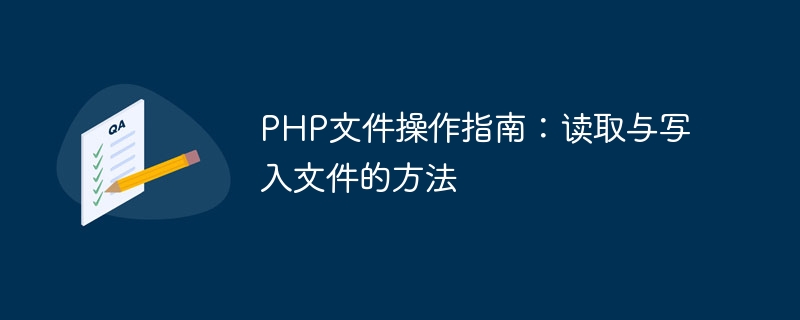

PHP File Operation Guide: Methods of Reading and Writing Files
When developing web applications, it is often necessary to read and write files. As a powerful server-side programming language, PHP provides a wealth of file operation functions and methods, allowing us to easily read and write various types of files. This article will introduce commonly used file operation methods in PHP and give relevant code examples.
Use the fopen() function to open a file and return a file handle for subsequent file operations. This function accepts two parameters, the first parameter is the file name (can be a relative path or an absolute path), and the second parameter is the mode for opening the file. Commonly used file opening modes are:
The following code example opens a file named "example.txt" and reads the file contents in read-only mode:
$file = fopen("example.txt", "r");
There are many ways to read the contents of a file. The following are several commonly used methods:
while(!feof($file)) { $line = fgets($file); echo $line; }
while(($char = fgetc($file)) !== false) { echo $char; }
$content = file_get_contents("example.txt"); echo $content;
Use the fwrite() function to write the content to a file. This function accepts three parameters, the first parameter is the file handle, the second parameter is the content to be written, and the third parameter is the optional write length. The following code example writes the contents to a file named "example.txt":
$file = fopen("example.txt", "w"); fwrite($file, "Hello, world!"); fclose($file);
After completing the file operation, the file should be closed to free up system resources . Use the fclose() function to close a file. The following is an example of closing a file:
fclose($file);
It should be noted that during the actual development process, file operations should be error-handled to ensure the safety and reliability of file operations. You can use the file_exists() function to check whether the file exists and the is_writable() function to check whether the file is writable.
Through the introduction of this article, I believe you have already understood the commonly used file operation methods in PHP, including opening files, reading file contents, writing file contents, and closing files. These operations are very helpful for developing web applications and doing file processing. I hope this article has inspired you and improved your file manipulation skills!
The above is the detailed content of PHP File Operation Guide: How to Read and Write Files. For more information, please follow other related articles on the PHP Chinese website!




